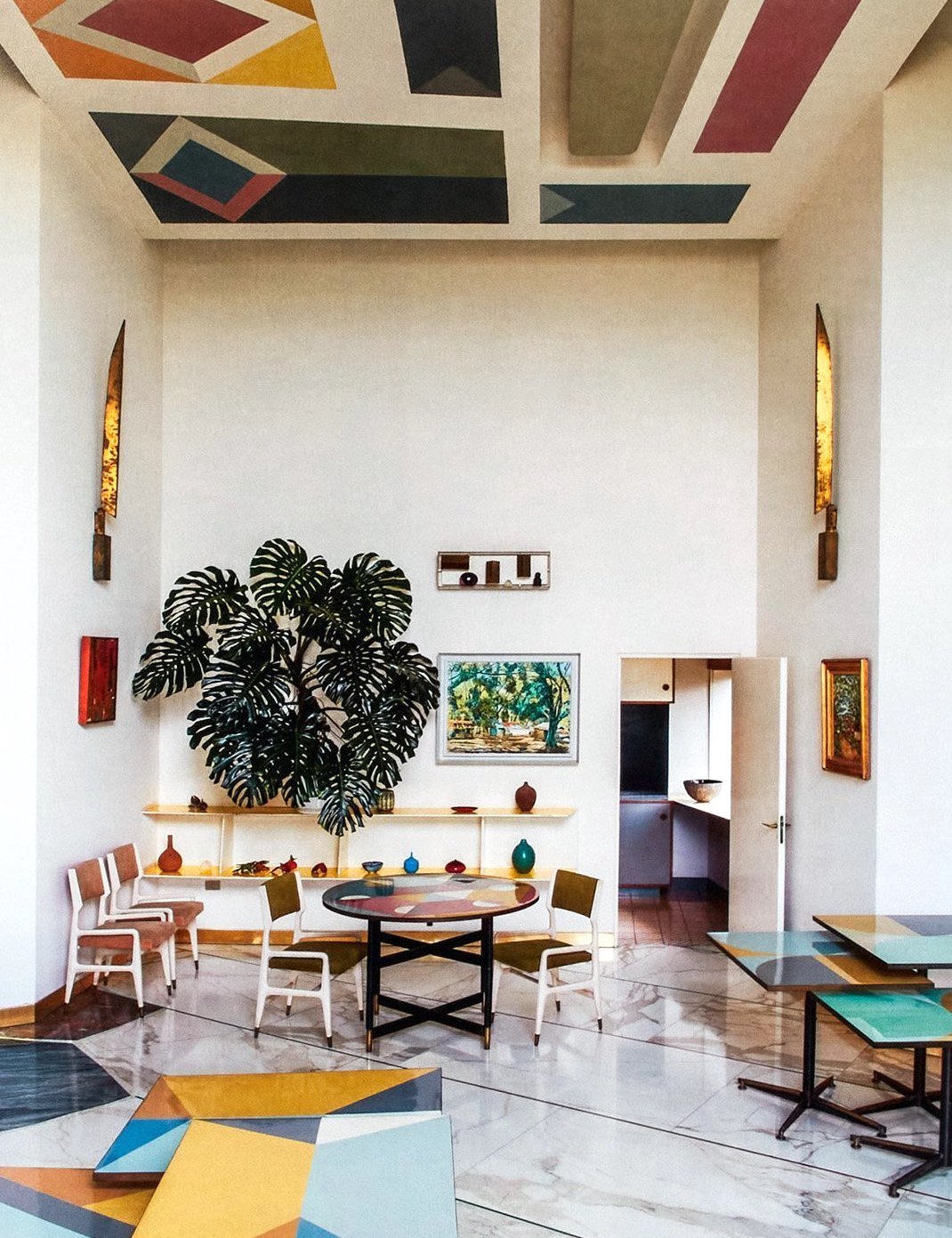Talking Shop
The Definitive Ponti
Taschen releases the most comprehensive account to date of Italian maestro Gio Ponti’s masterful work
“Enchantment, a useless thing, but as indispensable as bread.” —Gio Ponti

This month, Taschen is scheduled to release the most comprehensive Ponti monograph to date. Which is saying something. With a career that spanned more than 50 years—working across media from architecture, interiors, furniture, and craft to painting, art direction, and writing—Ponti’s oeuvre is vast. Beyond the sheer quantity of his creative output, Ponti’s stature in design history and his influence on those that followed can’t be overstated.
It’s been half-century since this masterful Italian auteur passed, but his fan base continues to grow. We’re all on the edge of our seats waiting to see what this new publication will add to the scholarship and to the enduring, enchanting aura that pervades the work that Ponti left behind.

When asked to encapsulate Ponti’s genius, Nicholas Kilner, notable dealer and specialist in historical Italian design, effused:
“Ponti was almost single handedly responsible for shaping the perception of 20th-century Italian design, both domestically and on the international stage. The breadth of his personal contribution to that history across the fields of design, decorative art, architecture, journalism, and academia is unfathomable. At every distinct stage of his storied career, he seamlessly married Italy’s strong visual traditions with the prevailing winds of modernism to create work that is simultaneously vital and new, while also fundamentally Italian. But it is perhaps in his tireless efforts to document the development of modern design and to promote the work of his contemporaries—both in the pages of Domus and Stile magazines or through direct collaboration—that Ponti is truly singular. No one did more to elevate the magnificence of Italian design than Gio Ponti.”

According to Taschen’s description of Gio Ponti, as the 572-page tome is titled, the undertaking was carried out in close collaboration with the Gio Ponti Archives and its founder Salvatore Licitra, with contributing essays from Lisa Licitra Ponti (Gio’s daughter and occasional collaborator) and Italian design experts Stefano Casciani, Fabio Marino, and Brian Kish. Of the 136 projects catalogued and illustrated in the book, Taschen offers: “Like windows onto his elusive life, unpublished materials and candid imagery create new dialogues between his famous masterpieces and his lesser-known feats.”

To amplify the momentousness of the publication, the first edition run includes only 5,000 numbered copies. In July an art edition will be released, numbering 1,000 copies and accompanied by a set of four prints of Ponti’s interior design drawings along with an exclusive Molteni&C reproduction of a coffee table that Ponti designed for his famous Villa Planchart in Caracas.

For as Nina Yashar, a Ponti expert and the inimitable design eye behind Nilufar Gallery in Milan, observes, Ponti’s legacy is truly unique: "An absolute genius, one of the most beloved designers amongst the Italian Great Masters. Gio Ponti was not only the most prolific, but also the most transversal designer, with a production ranging from architecture to design and art. He will always be renowned as a unique protagonist of his time, and his production will always remain invaluable." ◆
Gio Ponti is available for purchase now through Taschen and other international booksellers.
